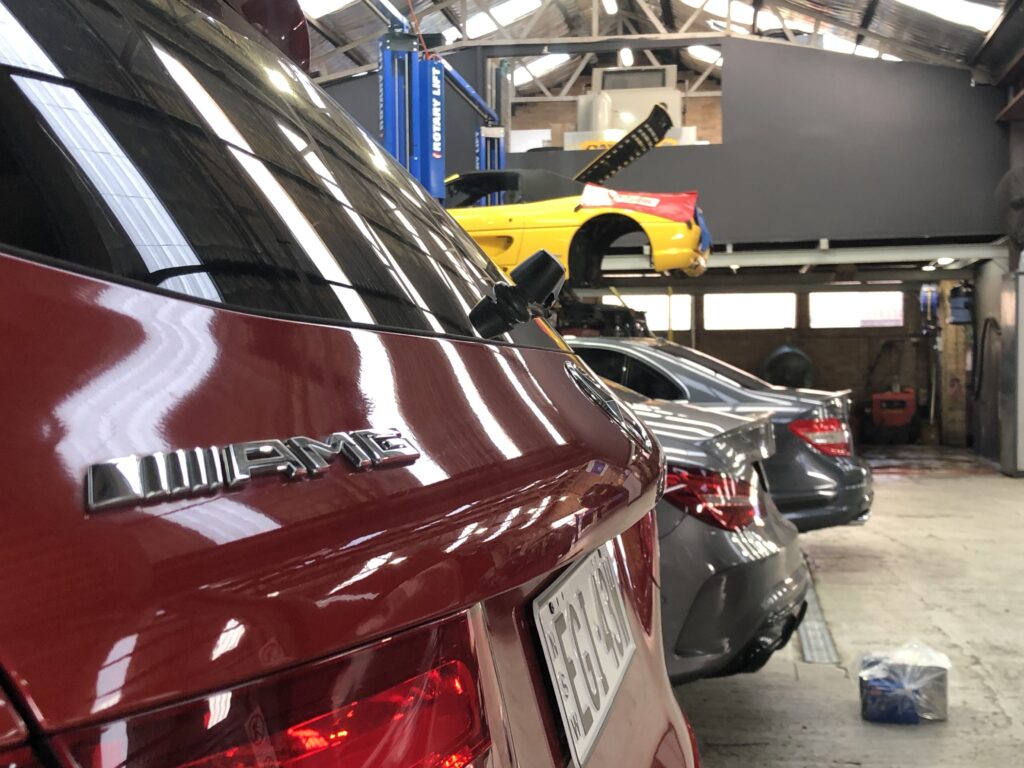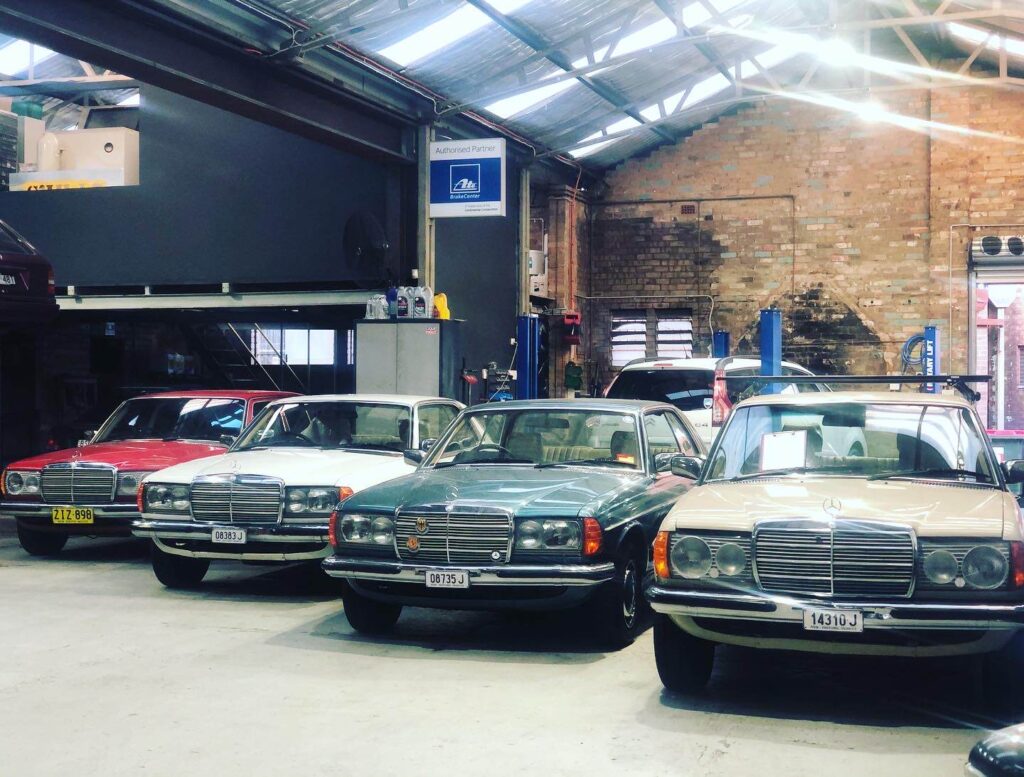- by luke lee
- 0
What Happens If a Car is Not Used for a Long Time?
If a car is not used for a long time, several issues can arise due to extended periods of inactivity. Here are some common problems that can occur:
- Battery issues. The battery can lose its charge over time, especially if the car is not started or driven regularly. This can result in a dead battery, requiring a jump-start or replacement.
- Tyre damage. When a car sits idle for a long time, the weight of the vehicle can cause flat spots to develop on the tyres. Flat spots can lead to vibrations and potentially require tire replacement.
- Fluid deterioration. Fluids such as engine oil, coolant, brake fluid and fuel can degrade over time. This can result in decreased lubrication, reduced effectiveness or even contamination. Regular fluid checks and changes are important to maintain optimal and smooth performance.
- Fuel system issues. Fuel can deteriorate and form deposits if the car is left with a full tank for an extended period. This can lead to problems such as clogged fuel injectors or a fuel system that needs cleaning.
- Brake problems. Brake components can experience corrosion and rust if the car is not used for a long time. Sticking brake pads or seized brake calipers are common issues that can occur.
- Stuck or seized components. Various components, such as the parking brake, clutch, or transmission, can become stuck or seized if left unused for an extended period. This can require repairs or replacements.
- Moisture and rust. Lack of movement and exposure to humidity can lead to moisture build-up, which can cause rust and corrosion on various parts of the car, including the body, undercarriage, and exhaust system.
- Electrical issues. Electrical systems can face problems due to corrosion or connectivity issues caused by inactivity. This can result in malfunctions with various electrical components, such as lights, power windows or the audio system.
Those problems might occur especially if your car has been idle for two weeks or more. If you haven’t driven your car for weeks or months, it’s important that you have it undergo professional inspection before you put it back to regular use.
We can check if there’s a problem
You can contact us here at CMR Automotive if you suspect there are problems with your car. If you’re concerned about safety and possible malfunction, our experienced mechanics can take a look and verify your suspicion. They will carry out advanced diagnostics on your automobile to pinpoint the root cause of each problem.
- by luke lee
- 0
What to Check Before Going on a Long Drive
To get ready for a long drive and help ensure your safety, it’s highly recommended that you check the following:
- Windscreen (ensure clear visibility, no dirt or smudges)
- Tyres (especially look for worn out areas, cuts and other defects)
- Engine oil, coolant, windscreen washer reservoir (to help maintain visibility all day and all night)
- Battery
- Headlights and other indicators (see if everything lights up and there’s nothing burnt out)
- Brakes (no squealing noises when you use them)
You can have expert mechanics do the inspection for you. They can pinpoint small problems that might lead to serious ones while you’re on the road. They can also help make sure that your automobile is in its top condition so that you’ll have a more efficient and smoother ride.
Driving in the rain
Aside from doing the inspection as mentioned above, it’s also good to get yourself ready in case the weather gets unpleasant. For better preparation and extra care, you should inspect the following (or have a mechanic do it for you):
- Tyre tread (> 1.5mm deep across the whole tyre width)
- Windscreen and lights are clean
- All your car’s lights work well
In other words, it’s about avoiding skidding and ensuring decent visibility while you drive in the rain.
Also follow the following practices for road safety during wet weather:
- Driving slowly (road slippery and the brake’s power might not be enough to stop you on time)
- Doubling the distance between you and the car in front (more than enough space because road is slippery)
- Driving with your lights on low beam (so you can see better in fog)
- Keeping your windscreen free of condensation by turning on your air conditioner or demister (removing mist)
- Avoiding roads covered with water (there might be holes or obstacles there in the water)
- Avoiding sudden turns, acceleration and braking (reduce skidding)
Whether it’s pleasant or unpleasant weather, your car’s function and road safety depend on what you do and whether your car is at its top condition or not (e.g. brakes and lights work properly). It’s always recommended to have your car checked by a mechanic before a long drive, especially if your automobile hasn’t undergone servicing for several months or years already.
- by luke lee
- 0
Is It Easy to Drive a Car in Australia?
Whether you’re a beginning driver or a tourist, it’s important to know how to make the driving experience safe, smooth and fun. This way, you can better focus on your journey and get the most out of the experience.
Driving in Australia
When you’re about to drive, it’s good to remember or think about the following:
- Drive on the left
- Give way to the right in traffic circles and intersections
- Your foreign drivers licence (you can use it up to 3 months as long as it is in English; if not, you should have an Internation Driving Permit or IDP first)
- Seatbelts are a must
- It’s illegal to use a mobile phone while driving, if you’re using your phone for navigation, you should use a hands-free cradle
- Police conduct random breath and drug tests all across the country
- About speed limits, note that Australia uses the metric system
- Petrol stations (service stations or “servos”) are available at regular intervals on all major highways
- Most fuel pumps are self-service
- Travel with a map, especially outside of cities and big towns because mobile phone coverage might be unreliable
- Familiarise yourself with the toll roads
Making sure your car is safe to drive
In addition, you have to ensure that your car is safe to drive. If you’ll rent a car, ask the provider if it has undergone recent maintenance. If you’ll use your own car, it’s good to have it inspected first especially when you’re about to go for a long drive.
To ensure your car is safe to drive, the mechanic will likely check the following:
- Brake system
- Steering and suspension
- Transmissions
- Radiator and cooling
- Headlights and overall lighting system (especially if you plan to travel at night)
If you want your car to undergo detailed inspection before you drive, you can contact us here at CMR Automotive. We have service centres at Leichhardt and Marrickville.
- by luke lee
- 0
Is It Worth Reconditioning an Engine?
In engine reconditioning, the goal is to improve your engine’s performance and efficiency. It’s cheaper than engine replacement, which is why many automobile owners choose reconditioning to save on costs.
What happens in engine reconditioning?
Here, what usually happens is that the engine is disassembled and the parts are cleaned and checked. Some parts might need repair or replacement. Then, the parts are reassembled and the engine is put back in the car again. The goal is to bring back the engine’s near top condition. This way, it can run smoothly again and help make your automobile more efficient in fuel use.
After years and thousands of kilometres, many of the parts of your engine will naturally wear out. Some of the engineered parts are gaskets, timing belts, pistons, oil pumps, valve seats, connecting rods and crankshaft. Through the years, they wear out and make the entire engine inefficient.
If those worn out parts need replacement, the mechanic should make sure that they’re compatible with your engine. One incompatible part can actually ruin the engine, which is why it’s important to choose an experienced mechanic to carry out this job.
How long does it take to recondition an engine?
It might take a few days or weeks. Aside from the hours necessary to carry out the job (some estimates are around 25 hours), you should also consider the time to find the necessary compatible parts. The search and delivery might take weeks or months depending on your engine’s make and availability of certain parts and components. To get a more accurate estimate of the timeline (as well as the costs), you should ask a professional mechanic.
When should you recondition an engine?
To be sure, it’s good to ask a trusted mechanic. It’s hard to know what the exact condition of an engine is just by looking at the signs (low fuel efficiency, excessive oil use, loss of power, lots of smoke, vehicle is hard to start). The reason might be different and the engine might need reconditioning in the first place (other parts and components are malfunctioning instead).
But if you notice those signs, it’s good to bring your car to a trusted mechanic so you can be sure what’s causing the problem. Whether your engine needs reconditioning or not (or you prefer buying a new one which costs more), it’s always good to pay attention to what your car tells you. If there’s something bothering you about how your car works, contact a trusted mechanic right away.
- by luke lee
- 0
Does My Car Have a Suspension Problem?
Your car’s suspension system helps keep your driving stable. It helps smooth out your driving on bumpy roads and keeps the wheels on the ground as much as possible.
However, that system will get weak due to lack of maintenance, natural wear and tear and regular driving on bumpy roads. As a result, you’ll feel that your driving experience will be literally rough, bumpy and unstable. This will also affect your safety on the road.
Signs your car has a suspension problem
To help ensure your safety and for your peace of mind, it’s good to know if your car’s suspension system already has problems. Some of the signs to look for are:
- Your car pulls to one side while driving
- You clearly feel each bump on the road
- You notice that one corner of your car sits lower than the other corners
- Your car pulls to one side while driving
- You clearly feel each bump on the road
- You notice that one corner of your car sits lower than the other corners
In other words, it’s always been a rough ride. However, you might still fail to notice those signs, which is why it’s critical to have your car undergo a detailed inspection and diagnostics. It’s especially the case when you’ve been used to driving in that condition. You feel it’s totally normal. But upon closer professional inspection, you will notice the problem (or an expert mechanic will do it for you).
Also, those signs might be hinting at other problems. Both old and modern cars have complex interdependent systems. One tiny malfunction might cascade to the whole and affect your car’s performance and your road safety. Because of the complexity and interdependence of the car’s parts and components, it always requires technical expertise to identify the root problem.
Here at CMR Automotive, we use advanced diagnostics tools and methods in identifying problems and malfunctions in the cars’ parts, components and entire systems. This way, we can accurately figure out the cause of the problem and take corresponding action in helping ensure your road safety and protect your car’s performance and longevity.
- by luke lee
- 0
When Should I Change My Car Tyres?
It’s likely the time to change your tyres if you notice any of the following:
- Tread is already worn out
- Damage in the sidewall
- Noticeable holes in the tread
- Bead is already deformed
To be sure, you should bring your car to an experienced mechanic. Your tyres should be inspected or if you’re experiencing any problems with your driving, the tyres may or may not be causing it.
Potential signs your tyres have problems
Aside from the things mentioned above, you should also look for the following:
- Rocks, nails and other foreign objects on your tyres
- Uneven tread wear or shallow tread
- Visible damages on the tyre surface and valve caps
- Rough ride (could be because of damage on the tyres or excessive wear)
- Vibrations while driving (aside from tyres, other things might be causing it)
In other words, bring your car to the mechanic if you notice something unusual with the appearance of your tyres or whenever you drive your car. Any small problem should be taken seriously because this can affect your car’s function and ultimately the safety of the driver, the passengers and others on the road.
How to inspect your tyres
When looking for initial problems on your tyres (and know if you should now bring your car to the mechanic), it helps to check the following:
- Tyre air pressure
- Tread wear using a depth gauge
- Wear and damage on the sidewall
- Uneven wear
- Changes in handling or steering
It’s good to personally inspect your tyres once a month or before you go on a long road trip. This is to help ensure safety and for you to gain peace of mind while driving.
But if you have any doubts or concerns about your tyres and your car as a whole, bring it to an experienced mechanic. Qualified mechanics can see the problem by running full diagnostics. Then, they can carry out the repairs if necessary. This is essential in ensuring road safety.
- by luke lee
- 0
How Often Should You Service Your Car?
You should service your car once every 6 months or 10,000 kilometres travelled. This way, your car will stay in top condition and also detect problems early on (before they get worse or a lot more expensive).
If you have an old car though, you might need to service your car more often (such as once every three months). It’s good to ask a reputable mechanic about this so you can better protect your car and help ensure your road safety.
How long does a car service take?
- Minor servicing (1.5 hours)
- Major or full servicing (3 to 6 hours)
Minor servicing might only involve testing the following (could just take 1.5 hours):
- Vehicle’s oil and oil filter
- Brake and brake fluid
- Steering and suspension
- Lights and wipers
- Air conditioning
- Spark plugs
On the other hand, major car servicing often involves the following (rough estimate is 3 to 6 hours):
- All of the minor servicing tasks mentioned above
- Carrying out an engine oil change (depends on the schedule set in the owner’s manual)
- Inspecting the entire vehicle for safety issues
- Repacking the wheel bearings
- Inspecting all engine belts and hoses
Note here that you don’t have to strictly follow the schedule. If you suspect there’s a problem or something’s bothering you (e.g. unusual squeaks and noises, car doesn’t start right away), you should contact a mechanic right away and set an appointment.
Why car servicing is important
Aside from protecting your engine and vehicle, other benefits of timely car servicing are:
- Prevents emergency breakdowns
- Helps ensure your safety and that of the passengers
- Helps you avoid costly repairs before existing problems get worse
- Prolongs performance and lifetime of your vehicle
If you miss a scheduled car service, you should bring your vehicle to the mechanic as soon as possible. This way, hidden issues and problems can still be prevented early on (or stop them from getting worse). This will also let you know if your vehicle is still safe to drive because of the inspection.
If something worries you about your car, you can contact us here at CMR Automotive. We can run a full diagnostics on your vehicle and perform the repair or servicing if necessary.
- by luke lee
- 0
What Should I Know as a New Car Owner?
Aside from freedom and convenience, having your own car also means responsibilities. This includes knowing how to take care of it and being aware whenever there’s something wrong with your vehicle.
For your safety and the car’s longevity
Some of the most important things to know as a new car owner are:
- Familiarity with the contents of the owner’s manual
- Importance of periodic maintenance
- Choosing a local mechanic
Reading the owner’s manual
Although driving and taking care of the car seems intuitive, many often still forget the basics and even panic when something seems wrong in the car.
The owner’s manual might already have the answers to your problems. It will also have the most important instructions such as what oil to use and what maintenance schedule to follow. Aside from providing you with answers, the owner’s manual can also help you best care for your car as well as prevent damages and costly repairs in the first place.
Periodic maintenance
One effective and actually affordable way to prevent damages and costly repairs is by following the maintenance schedule as stated in the owner’s manual. With timely maintenance, you help ensure that your vehicle’s engine and other parts and components are working at top condition. This can mean greater fuel efficiency and that your vehicle’s engine won’t have to work hard every day (less wear and tear and that your engine will experience fewer problems in the long term).
Periodic maintenance can also help reveal problems early on before they get worse and expensive to repair. More importantly, spotting those problems early on can help ensure your safety while driving.
Local mechanic
For periodic maintenance and future repairs, it’s important to choose a good mechanic who can properly get the job done.
Most car owners often found their first mechanic after they asked their friends or family or after they did a quick search online. They have benefitted from the experience already gained by their friends, family and others when dealing with mechanics.
When choosing a local mechanic or automotive repair centre, you can also benefit from the knowledge and experience of people you know and others through their online reviews. Then, you can also check the website of the repair centre and get familiar with their history and services.
As a new car owner, you’ll still have a lot to figure out along the way. To know the basics, it’s good to start with the owner’s manual and then know where to get help in case something goes wrong or when it’s time for maintenance. These can help you improve your safety on the road and get the most out of your car.
- by admin
- 0
Mercedes benz AMG and Ferrari day
CMR Automotive had the pleasure on working on these three Mercedes Benz AMG’s.
Being summer, the three AMG’s were all in for cooling system repairs. These types of cold climate vehicles can be susceptible to hotter weather, so make sure you have your cooling system checked before going on a long drive. The bright Yellow 355 Ferrari was in to have the engine and transmission removed for a number of repairs. There isn’t a vehicle or repair that is too complicated for the staff at CMR.

- by admin
- 0
Mercedes Benz
CMR Automotive is the number one Mercedes Benz specialist in the Inner West –
Whether you have a vintage beauty or a top of the class AMG we can provide service, repair, diagnostic and peace of mind for your luxury vehicle. Give us a call on 95193311 and have a chat to our friendly and knowledgeable service manger about your needs.

Archives
| M | T | W | T | F | S | S |
|---|---|---|---|---|---|---|
| 1 | 2 | |||||
| 3 | 4 | 5 | 6 | 7 | 8 | 9 |
| 10 | 11 | 12 | 13 | 14 | 15 | 16 |
| 17 | 18 | 19 | 20 | 21 | 22 | 23 |
| 24 | 25 | 26 | 27 | 28 | 29 | 30 |
| 31 | ||||||
Categories
- Uncategorized (40)



